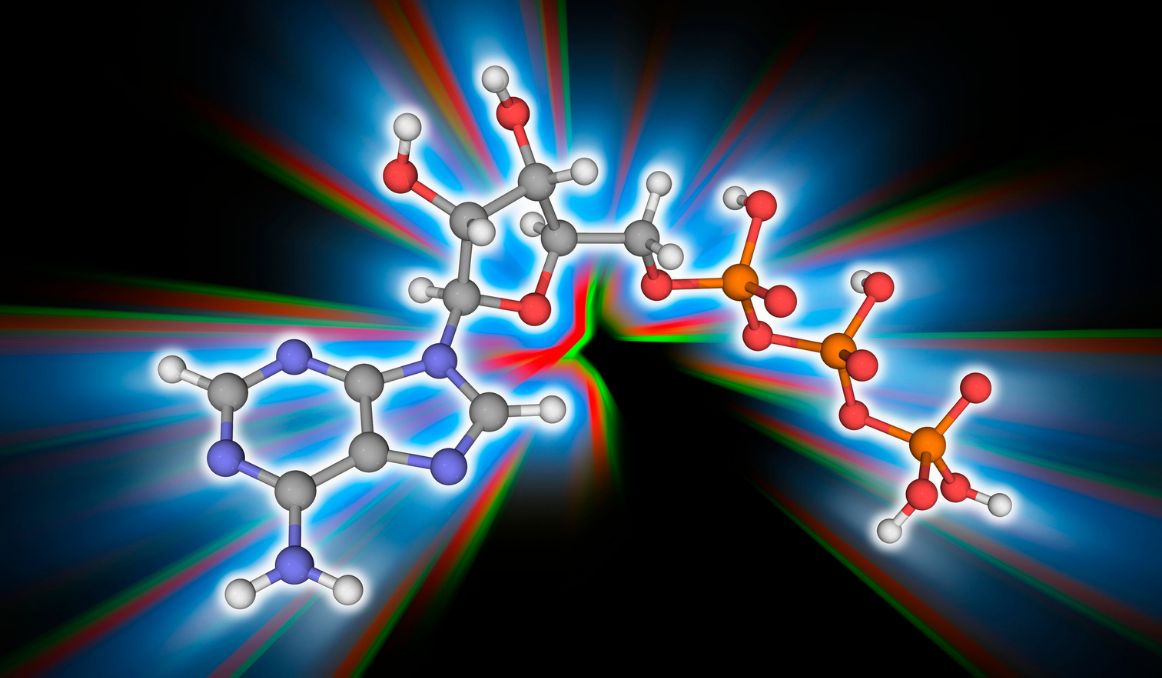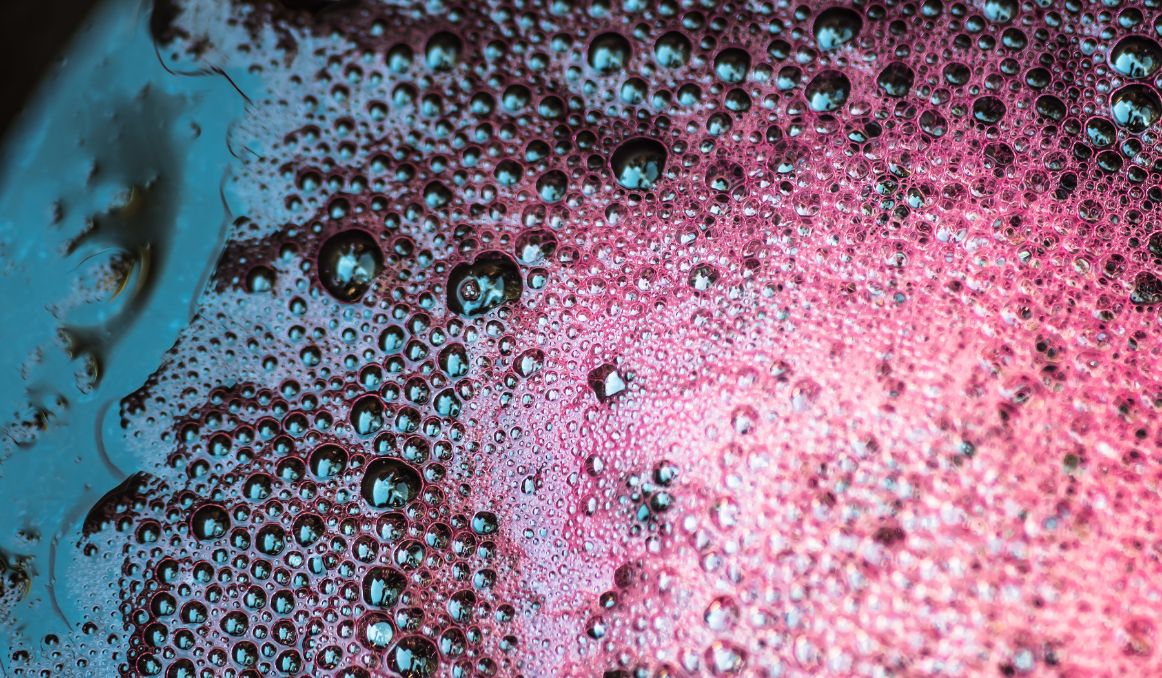How Much ATP Is Produced During Fermentation?
Sometimes, the brewing and winemaking process can take us to really nerdy places. Some of us started out as chemistry majors in school, or we were thrilled to get our first chemistry kit as kids. Today, we wonder what the many micronutrients and chemical compounds are in beer and wine.
ATP is just one of those chemicals produced during fermentation, and as ATP plays an enormous role in many aspects of life, it can be interesting to explore how much ATP is produced during fermentation.
What is ATP?

ATP stands for adenosine triphosphate, and it is a molecule found in the cells of all living things.
Great, you say, there are lots of molecules. Why do I care about ATP?
ATP and Breath
First of all, without ATP, you would not be breathing right now.
What you probably already know is that energy is stored in carbohydrates like glycogen and fats. Carbohydrates are critical for energy production, but they don’t do the actual producing of energy. They just keep the energy stored in their molecules.
The energy production is actually done by ATP.
So, in order for your body to use the carbohydrates you eat, in order for your body to use the carbohydrates stored in your body, the energy inside the carbohydrates has to be switched to ATP.
So here’s what happens:
You eat carbs. The carbs are stored in your body. The carbs are full of energy, and that energy is safely stored there for when you need it.
Then, your body signals those carbs that you need energy, and the carb is converted to ATP, which then acts as a shuttle service, sending the energy to the area of the body where it is needed.
Human biology is cool, right?
What is needed for this conversion? Oxygen.
You get a great example of this when you breathe. Every time you breathe, you provide oxygen to your entire body. That oxygen then accepts electrons at the end of its transport chain, which fuels the conversion from carbohydrate to ATP. This process is called cellular respiration.
However, when oxygen is in short supply, such as when you exercise, ATP is generated anaerobically.
Basically, part of your body is demanding energy, in the case of exercise, this would be the muscles, and you do not have enough oxygen to create the ATP required for energy. Thus, the demand forces the ATP to be converted through fermentation.
Yes, the human body uses fermentation to produce energy.
So next time you go for a run, just remember you are essentially undergoing the same process as wine or beer or kombucha to get the energy you need. Well, it’s actually lactic acid fermentation.
ATP in Beer, Wine, and other Foods and Beverages

ATP comes into play in fermented foods and beverages because the carbohydrates that are storing the energy in the original food – be it grain, grape, or tea – must be released and converted to energy to make ethanol and carbon dioxide.
In short, the yeast requires oxygen to do its work.
Remember, before the food or beverage is fermented, it is just storing energy, and virtually every single food we use to make an alcoholic beverage or fermented food like bread, must extract that energy to become its final state – beer, wine, or sourdough, for example.
In its original state, the food would just sit there.
But once yeast is added, a tremendous amount of energy is exerted in order to ferment. Just take a look in any fermentation tank or rising bread. You’ll see lots of fizzing and bubbling as the stored energy is used up.
Also remember that yeast usually requires oxygen to do its job, but thanks to the chemical process of fermentation, it can demand the ATP be produced when oxygen is in short supply. The meeting of this demand is thanks largely to the nature of yeast, which can reproduce aerobically and anaerobically.
Thus, when you make any fermented food or drink the ATP process is as follows:
Crack your malted grain or crush your grapes.
Boil and steep your grain or grapes.
Add yeast.
Once you add the yeast, it draws on the oxygen provided to send the signal to the carbohydrates (sugars) in the grain or grape (or tea or bread dough, etc), to convert to ATP. The ATP then provides the energy to create the alcohol and carbon dioxide (and hundreds of other micronutrients).
How Much ATP Is Produced During Fermentation? Chemistry is Fun!
For those who are interested in the super technical stuff are are wondering exactly how much ATP is produced during fermentation, the breakdown is as follows:
The ATP conversion takes place during the glycolysis process (this is when sugar converts to alcohol), so we can say that for each mole (yes it’s called a mole) of glucose, two net moles of ATP are produced.
What is interesting about this process is that the glycolysis process actually requires two moles of ATP to produce the end result, the alcohol, so in the end, it actually produces a total of four moles of ATP, only two of which are newly produced.
If you think back to the power of ATP, you will remember that pretty much nothing can be done without ATP, as ATP is the active energy. So, in order to produce ATP, you need ATP.
It’s a kind of freaky chemistry paradox.
Like I said, chemistry is fun!
ATP serves an additional purpose in beer and wine when it comes to hygiene
As a final note, if you have sterilized all of your equipment and your entire brewing or winemaking area, you can scan the area with a bioluminiscent tool that will search for ATP. You should not find any ATP if there is no active contaminant like a wild yeast or bacteria. But if you do find ATP, you now that energy is active, which means you have a contaminant in your space that is alive and well.
And it’s time to clean again.
Cheers!
Passionate about yeast fermentation and all the wonders it can do? So are we! If you’re interested in finding out how you can use our technology to control fermentation and monitor your yeast, save work hours and improve the cost-efficiency of your business, drop us a line at [email protected]
Also, check out these product pages, if you’re into beer or wine making:
- Oculyze BB 2.0 (Better Brewing) Yeast Cell Counter App + Hardware
- Oculyze FW (Fermentation Wine) Yeast Cell Counter App + Hardware
…or our custom solution page for other use cases (yours included):
Also, you can now get access to a fully functional demo account to test our Web App. Completely free of charge and with no commitment to purchase.
Sources:


